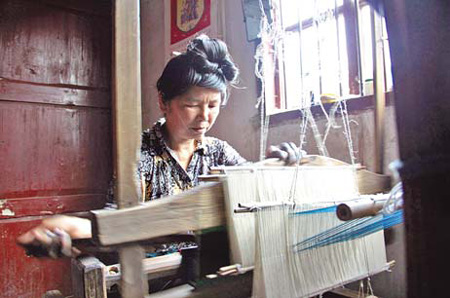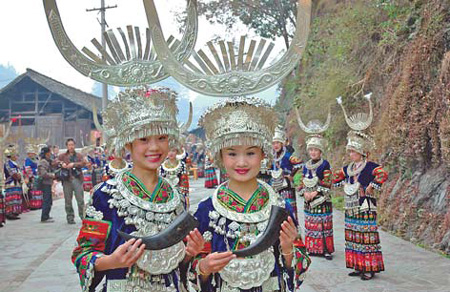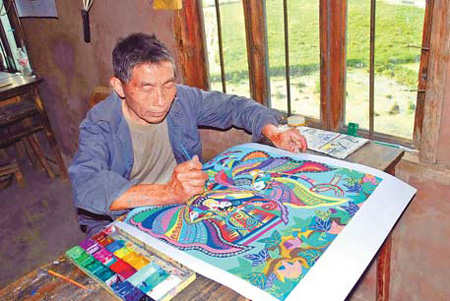Focus
Modernity can be two-way street for cultural heritage
By Hu Yongqi (China Daily)
Updated: 2010-11-03 07:52
 |
Large Medium Small |
She said her office is now applying to the United Nations to recognize Miao traditional costumes as world cultural heritage.
Official tourism figures show that Qiandongnan received 14 million visitors in 2009, generating more than 10 billion yuan in revenue. The peak time was during the National Day holiday week in October, when residents earned in excess of 4.8 million yuan.
Turning to tourism
Mandong village, which is 45 kilometers from Kaili and home to 1,700 Miao people, is already reaping the benefits of using its traditional industry to develop tourism.
Women here have been weaving for more than a century. Using various fabrics and silk, they immerse their products in a dyestuff abstracted from the root of a indigenous tree, then air them out in sunlight for several days. The whole process takes about 10 days.
"The loom is one of my good friends," said Pan Ying, 46, as she pinned her hair into a knot at the back of her neck in typical Miao style. "We have worked together for more than 25 years."
Even as late as the 1990s, almost 100 percent of the garments worn by villagers were homemade. Most products that run off the looms now, however, are sold to tourists.
"Many visitors are attracted by our traditional culture, which has been well preserved," said Pan, director of the village's women's committee, who explained that she weaves with the same machine her mother used for some 50 years.
For weavers in Mandong, the tourism industry that has been gradually developed since 1983 represents an extra 5,000 or 6,000 yuan a month, roughly one-third of the average income for each household.
Although business opportunities abound, the changes have failed to convince many of the village's young people to take up the handicraft.
Like in Tonggu, the lure of the big cities is proving too strong.
In the past, weaving was "a skill girls needed to have before they got married", said Pan. But things have changed and in the past two decades the number of women working the looms plummeting from 700 to just 200.
|
Pan Ying, 46, in Mandong village has been weaving for more than 25 years. The loom she uses is the same her mother used for about five decades. Hu Yongqi / China Daily |
|
Young Miao women greet visitors at the entrance of their village with bull horns, which are traditionally used to hold rice wine. Chen Peiliang / for China Daily |
|
Zhao Yuanqiao, an artist in Tonggu village, puts the final touches to his watercolor painting. Zhao is one of the few remaining artists in the village. Chen Peiliang / for China Daily |


